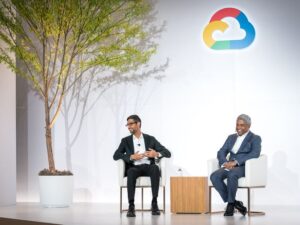As we look ahead, evolving technologies are presenting home and auto owners with new potential risks. Hacking and ransomware, once confined to computer networks, may become an endemic cyber vulnerability for our increasingly connected vehicles and “smart home” devices. New sources of energy may help reduce our reliance on dirty fuels but could introduce new fire hazards into the home. Yet many of these same technologies could create new data sources and risk mitigation options for personal lines insurers, potentially providing them with new opportunities to help their customers manage these evolving risks.
Connected vehicles
Cars can stall. Cars can crash. And many of today’s cars can be hacked.
Modern vehicles are often computers on wheels, brimming with sophisticated electronics, sensors, processors, and communication devices that enable all kinds of advanced features—from proximity sensors that could potentially help you avoid that fender bender to automated parallel parking (to help you avoid the embarrassment of trying to do it yourself). Just like our computers, “connected cars” may have multiple new vulnerabilities that hackers and criminals can exploit and that insurers may now want to consider during underwriting.
Just as hackers lock down computer networks and steal data in exchange for ransom, connected vehicles could be held for ransom. Personal auto insurers may want to consider how to adapt coverages if vehicle ransomware becomes more prevalent.
Vehicle ransomware risk may pale in comparison to the potential for a connected vehicle to be remotely hijacked and driven against a driver’s will.
While connected vehicles may carry new risk exposures, they also have the potential to accelerate the evolution of usage-based auto insurance. Already fairly mature when COVID-19 struck, the growth of remote work brought newfound consumer attention to driving behavior and insurance pricing. Many insurers may have the opportunity to continue to refine their telematics programs through, among other things, the use of sophisticated analytics on vehicle telemetry data to offer even more personalized insurance offerings to customers and prospects.
Connected vehicles may also help streamline the claims process. As vehicles and roadways incorporate more sensors, they’re collecting data that could potentially assist insurance adjusters in determining the facts of a claim faster and with potentially more certainty than relying on statements or inspections of physical damage.
A smarter home
Just as telematics has introduced new potential data sources for auto insurers and new insurance products for consumers, Internet of Things devices may do the same for homeowners insurers.
Small, Internet-connected devices like temperature, pressure and water sensors could alert a homeowner to problems before they erupt into major losses. For insureds who own rental properties that may be unoccupied for stretches of time, temperature sensors could provide an early warning that the heating system is malfunctioning and that pipes are on the verge of bursting. Insurers can use the presence of these sensors to offer discounts or credits, just as some insurers offer homeowners discounts if the insured installs a monitored security system.
The presence of smart home sensors may also provide new sources of underwriting data for insurers to analyze. With new sources of data comes new opportunities for insurers to develop products to help their customers manage the evolving risks of homeownership.
What about hacking? It appears smart home IoT devices may be vulnerable as well. The scenario isn’t hard to picture: You wake up shivering one brisk winter morning, wondering why your house is freezing. You wander over to your smart home thermostat, but instead of the temperature you’re expecting (a cozy 68), you see a message saying your heating system has been hijacked and won’t be unlocked until you fork over some cryptocurrency. And just as connected car hacks could lead to catastrophic collisions if a hacker commandeers the wheel, smart home hacks could cause fires or even explosions in a home.
Alternative energy
In the face of climate change, both homeowners and vehicle owners are embracing greener alternatives. Residential solar installations are soaring as the costs of solar power continue to decline. Understanding the nature of solar panel risks has the potential to be an important consideration for insurers. There have been reports that firefighters are finding it difficult to cut holes in roofs when battling a blaze. Solar systems may occasionally cause residential fires. With solar panels still being new relative to traditional roofing, insurers may also want to consider the lifespan of the panels, as well as the related replacement costs should those panels be damaged—the better to help educate their customers about the possible limits of insurance they may need following a solar installation.
Electric vehicles (EVs) and their charging stations are also proliferating. As electric vehicles are also new relative to their combustion engine counterparts, insurers may also want to consider how EVs and their components handle accidents and physical damage—including concerns about battery fires. Some of the emerging cyber risks associated with connected vehicles may also be present in EVs. Residential charging stations may add new risk exposures as well. As insurers begin to understand the new risks associated with the adoption of alternative energy, they may consider offering new options for customers to incentivize the use of safety enclosures for charging stations or solar batteries to limit fire damage should a battery ignite.
Toward data-driven change
Insurance products tend to thrive where data is plentiful (the law of large numbers and all that). While the nature of risk faced by auto and homeowners continues to evolve with new technology, the insurance industry has the opportunity to leverage many of the same technologies to help create new data streams that could inform product development and help their customers manage these dynamic risks.
We may not know everything we’ll learn as new data sources emerge, but we can be fairly confident that they’ll help to bring change—and opportunity—to insurers and insureds alike.
Source: Digital Insurance








